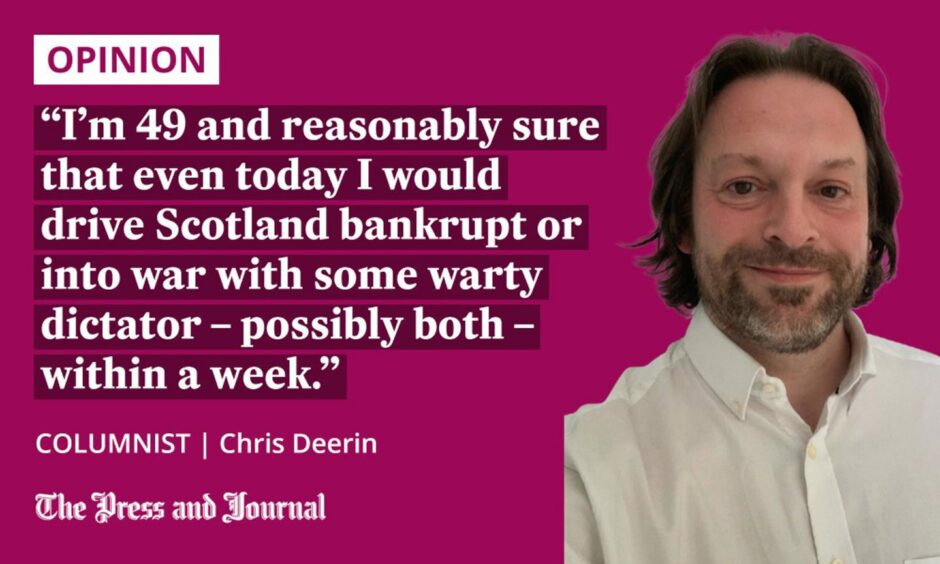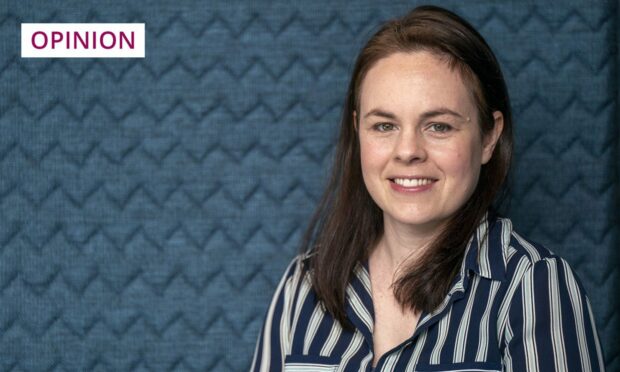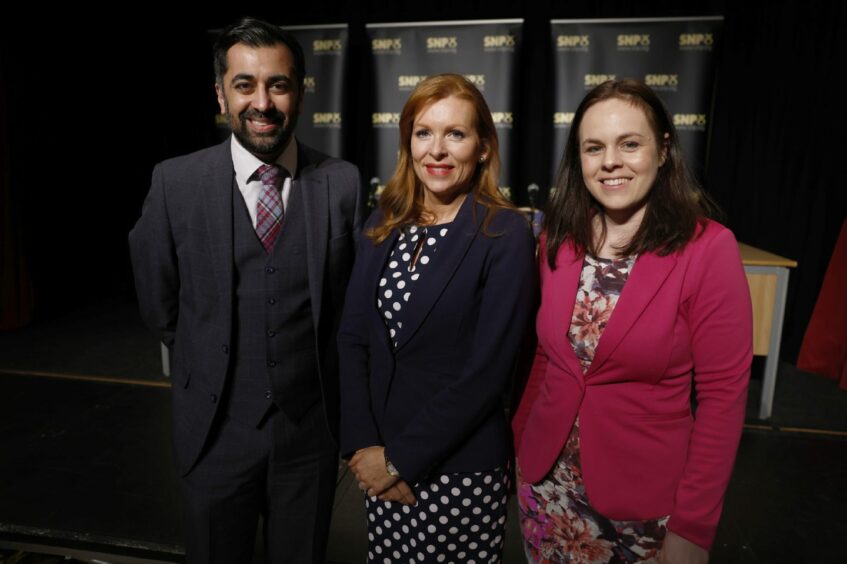Age shouldn’t be a factor when it comes to who should lead us – experience and aptitude should count instead, writes Chris Deerin.
Should we be talking about Kate Forbes’s age? I’m a little surprised it hasn’t come up thus far in the SNP leadership contest.
Perhaps this has something to do with the unusual gifts of the Finance Secretary. Forbes may be a tot-faced 32, barely out the pram in political terms, but she carries herself with an air of confidence and speaks with a seriousness that bely her tender years. She seems both deeper and wiser than she should be, has an attractive demeanour and a compelling voice: bell-clear, with just a hint of Highland accent; call-centre perfect.
But still, and even though it feels vaguely impolite to mention it, 32 really is young. I wonder what you were up to at that age? Could you have been entrusted with the running of a nation and the care of more than five million people? I’m 49 and reasonably sure that even today I would drive Scotland bankrupt or into war with some warty dictator – possibly both – within a week.
We do seem to have a thing for the promise and potency of youthful leaders, though. Tony Blair and David Cameron were 43 when they entered Downing Street, while Rishi Sunak was 42. Nicola Sturgeon became first minister at 44. Chatting with Lord McConnell last week, he reminded me that he was just 41 when propelled into office, following the resignation of Henry McLeish. He had seemed older to me at the time – but I was then at the age where everyone from their mid-30s up seemed practically pensionable.
Is there a good age for leading a country?
I had also presumed that our historical leaders had been greying gerontocrats, but that isn’t true – maybe it was just the periwigs. Even setting aside Pitt the Younger, who became PM at 24, plenty of our earliest top dogs, from the 18th Century on, were in their 30s and 40s. Of course, given the limited life expectancy in those days, reaching one’s 60s was often quite the achievement – poor Pitt keeled over at 46 – so perhaps they had to get a move on.

It was really from the late 19th Century that the upper-middle-aged fully took charge. From Arthur Balfour in 1902 until Alec Douglas-Home in 1963, the youngest prime minister was 53. Harold Wilson seems to have been a youthful blip at 48 for the swinging 60s, but it took a while for the groovy young things to dominate again. That era started with – yes, really – John Major, who was 47.
It’s not just Scotland, and not just the UK. Many countries have shown an instinct for electing spring chickens in recent years. Jacinda Ardern became PM of New Zealand at 37, while Finland’s Sanna Marin was 34. Leo Varadkar was Taoiseach at 38, and El Salvador’s Nayib Bukele became president at 37. Mohamed bin Salman has been Saudi’s Crown Prince and most powerful figure since he was 31, though his people didn’t have much say in the matter. Dritan Abazovic of Montenegro and Gabriel Boric of Chile are 37.
24/7 world of politics perhaps needs the dynamism of youth
There’s a lot of change going on in the world, from the shifting sands under globalisation to the tsunami being caused by the technological revolution. In this media age, politics is a 24/7, multi-faceted sport in a way that would have baffled Gladstone when he became PM for the final time in 1892 at the age of 82. Perhaps this requires the dynamism of youth or relative youth. Interestingly, it’s the US – creator of the teenager and teen culture – that is most obviously holding out. At 80, Joe Biden may yet run for a second term, while Donald Trump, who unfortunately seems determined to secure the Republican nomination in order to finish his country off, is 76. But then, America’s tormented democracy is an example to no one at the moment.
🔴 The SNP leadership race is “too close to call” after criticism of Kate Forbes’ religious values failed to kill off her bid to succeed Nicola Sturgeon, a landmark poll of party members has revealed https://t.co/WQ3z0N1duW
— The Telegraph (@Telegraph) March 4, 2023
Should age be a factor when it comes to choosing who leads us? Biden may be a little wobbly when descending the steps of Air Force One, but his long senatorial experience in thinking about and shaping foreign policy is arguably a bonus when it comes to dealing with Vladimir Putin, Ukraine and the rise of China. Liz Truss was 47 when she was made PM, and lasted weeks. The legacy of Ardern and Sturgeon have been given real goings over since their resignations.
Tony Blair has said that he’d be a better PM now than he was in 1997, and I’m pretty sure McConnell, impactful though he was, would make a more effective FM today. I often think that William Hague at 61 would be the impressive leader he didn’t quite manage to be back in the day.
Age shouldn’t count against Kate Forbes
None of which should, in the end, count against Forbes. After all, you can only beat what’s in front of you and this race looks like a straight fight between her and Humza Yousaf, the 37-year-old Health Secretary. Yousaf may have five years on Forbes, but he has so far shown less aptitude in government and has been less convincing on the stump than his opponent.
As they say, if you’re good enough, you’re old enough. And so I have surprisingly few qualms about a 32-year-old – or, at least, this 32-year-old – entering Bute House. Even if Pitt the Younger might think she’s already well past her best.
Chris Deerin is a leading journalist and commentator who heads independent, non-party think tank, Reform Scotland


Conversation